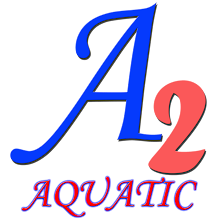


Promoting swimming and lifesaving to the masses



 A mosaic made using pictures taken by me of my students. They are the fourth batch of lifesavers I've trained. See the smiles on their faces? Haha. No doubt training was tough, but I can sense that they have all grown up and matured. For some of them, they are undergoing a very tough year ahead. The 'O' Levels! I wish them all the best sincerely! I hope they put in as much effort in their studies as they did in lifesaving trainings if not more.
A mosaic made using pictures taken by me of my students. They are the fourth batch of lifesavers I've trained. See the smiles on their faces? Haha. No doubt training was tough, but I can sense that they have all grown up and matured. For some of them, they are undergoing a very tough year ahead. The 'O' Levels! I wish them all the best sincerely! I hope they put in as much effort in their studies as they did in lifesaving trainings if not more. The fifth batch of lifesavers under me. Although they are very naughty during training, they still give their all when the going gets tough! "Apply that to your studies and I'm sure you will go very far!" - A note from me to them.
The fifth batch of lifesavers under me. Although they are very naughty during training, they still give their all when the going gets tough! "Apply that to your studies and I'm sure you will go very far!" - A note from me to them.
 A continuation of the Water Adventure Experience. My students (in the picture) had successfully completed their elementary and intermediate levels. Equipped with the confidence, they have decided to embark on a higher level of swimming which is the Survival Swimming Course. This course is commonly known as the NASSA Awards. It consists of Bronze, Silver, Gold and GoldStar awards.
A continuation of the Water Adventure Experience. My students (in the picture) had successfully completed their elementary and intermediate levels. Equipped with the confidence, they have decided to embark on a higher level of swimming which is the Survival Swimming Course. This course is commonly known as the NASSA Awards. It consists of Bronze, Silver, Gold and GoldStar awards.
 "Treading Water". It can also literally mean "standing" in the water. It is performed with a combination of breaststroke kick and hand pulling in a vertical direction to acheive the effect of treading water.
"Treading Water". It can also literally mean "standing" in the water. It is performed with a combination of breaststroke kick and hand pulling in a vertical direction to acheive the effect of treading water. Learning how to swim comes in several levels. It starts with Elementary Level I & II. In short, students in Elementary Level will accquire skills that imbuilds in them "Water Confidence Skills", "Floating and Recovery (Standing up in the water after floating) skills", "Kicking Skills", "Surface Dive Skills" and "Squat Dive into waters".
Learning how to swim comes in several levels. It starts with Elementary Level I & II. In short, students in Elementary Level will accquire skills that imbuilds in them "Water Confidence Skills", "Floating and Recovery (Standing up in the water after floating) skills", "Kicking Skills", "Surface Dive Skills" and "Squat Dive into waters". "Water Confidence Skills". Students will have to place their face into the water and hold their breaths for a short amount of time. They will also be asked to submerge their heads and open their eyes under water.
"Water Confidence Skills". Students will have to place their face into the water and hold their breaths for a short amount of time. They will also be asked to submerge their heads and open their eyes under water. The above is the pioneer batch of lifesavers whom I have trained when I was first appointed as Lifesaving Instructor. The kids in the group were very estatic. The adults were more focused as this course could pave the way to a career in teaching swimming, lifesaving or aqua-aerobics.
The above is the pioneer batch of lifesavers whom I have trained when I was first appointed as Lifesaving Instructor. The kids in the group were very estatic. The adults were more focused as this course could pave the way to a career in teaching swimming, lifesaving or aqua-aerobics. Lifesaving Course includes Practical and Theory aspects. Theory is a must as the lifesavers need to have the knowledge on how-to-do and what-to-do if they really encounter situations after the course. Lifesaving is not entirely based on brawn but also on brains too. I believe that a thinking lifesaver beats a brute strength lifeaver any time.
Lifesaving Course includes Practical and Theory aspects. Theory is a must as the lifesavers need to have the knowledge on how-to-do and what-to-do if they really encounter situations after the course. Lifesaving is not entirely based on brawn but also on brains too. I believe that a thinking lifesaver beats a brute strength lifeaver any time.
